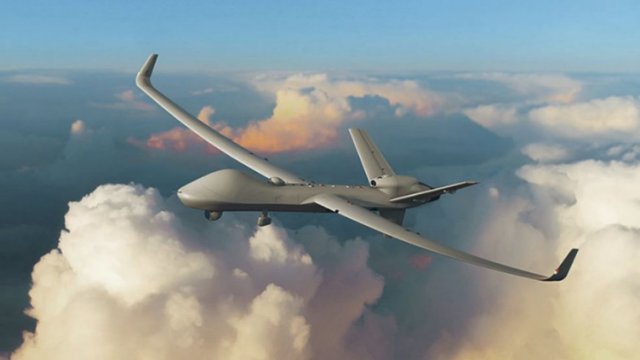 General Atomics Aeronautical Systems, Inc.
General Atomics Aeronautical Systems, Inc.
has announced that it has successfully completed fuselage structural integrity testing of its Certifiable Predator B (CPB) RPA.
“Completion of this testing signifies that the design of the new fuselage will be able to meet the strict requirements for type-certification and routine operations in national airspace,” said Linden Blue, CEO, GA-ASI. “This fuselage is designed to meet lighting-strike, damage-tolerance, and turbulence-induced stress requirements specified by the NATO UAV [Unmanned Aerial Vehicle] Airworthiness Standard. It also will accommodate an integrated Detect & Avoid System, including an anti-collision radar system.”
Following a two-day Test Readiness Review (TRR), rigorous testing began in February at the company’s Research and Development Facility in California. The “proof testing” method allowed GA-ASI to evaluate and confirm the integrity of CPB’s fuselage quickly and economically, enabling assessments of increasing mechanical stresses at levels higher than the airframe will incur in flight. The resultant empirical data supports computational modeling, analyses, and verification to confirm compliance with exacting airworthiness requirements.
Proof tests were conducted successfully across multiple regions of the fuselage. Testing focus included determination of the effects of airframe bending, aft section torsion, maximum power plant torque, multiple stress tests (load cases) on main and nose landing gear mounts, and maximum hoist load. Data collected from the stress tests are leveraged for model correlation in order to maximize airborne safety. Proof testing will be followed by aircraft flight testing this year.
Structural integrity testing of CPB’s wings and tail design was previously completed in December 2015 under a separate effort, ensuring that the aircraft meets its intended design requirements.
GA-ASI is undertaking an Independent Research and Development (IRAD) effort to design, develop, and produce CPB, a variant of its Predator B RPA that is fully compliant with NATO’s UAV SYSTEM AIRWORTHINESS REQUIREMENTS (defined in STANAG 4671). Page 5 of this Standard states: If a National Certifying Authority states that a UAV System airworthiness is compliant with STANAG 4671 (and any appropriate national reservations), then, from an airworthiness perspective, that UAV System should have streamlined approval to fly in the airspace of other NATO countries, if those countries have also ratified this STANAG.“Additionally, CPB completed a successful internal Phase 1 Critical Design Review (CDR) in June 2015, along with reviews by two prospective European customers.
Source: Press Release
